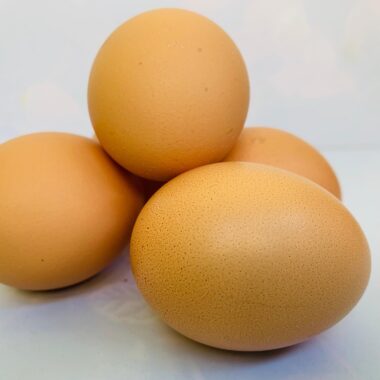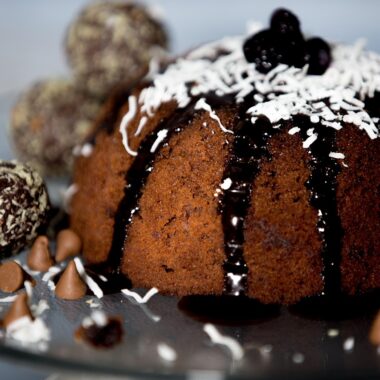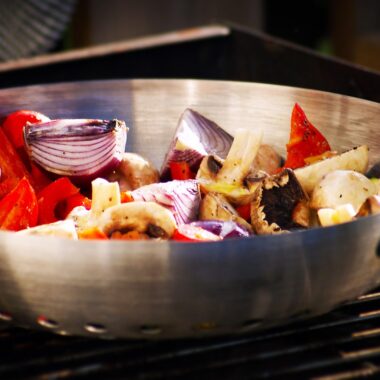Raising chickens can be a rewarding experience, whether for fresh eggs, companionship, or sustainable living. However, like any livestock, chickens can encounter health issues that require prompt attention. One of the most common and potentially life-threatening conditions in laying hens is egg binding. Egg binding occurs when a hen is unable to pass an egg, leading to discomfort, distress, and, if untreated, severe complications or death.
This article provides a detailed guide on how to identify, treat, and prevent egg binding in chickens. With a mix of practical steps, home remedies, and preventative measures, you’ll be equipped to help your feathered friends through this ordeal. Let’s dive into the world of egg binding and explore how to cure a chicken effectively and safely.
What is Egg Binding?
Egg binding, or dystocia, is a condition where a hen cannot expel an egg from her oviduct. The egg becomes stuck, either in the oviduct or near the cloaca (the external opening where eggs, waste, and reproductive fluids exit). This can happen for a variety of reasons, including oversized eggs, calcium deficiencies, stress, dehydration, or poor muscle tone in older hens.
When a hen is egg-bound, she may exhibit signs of discomfort, such as lethargy, straining, or sitting in the nesting box for prolonged periods without laying. Left untreated, egg binding can lead to serious complications, including infection, prolapse (where internal tissues protrude from the cloaca), or even rupture of the egg inside the hen, which can be fatal.
The good news? With quick action and proper care, most cases of egg binding can be resolved at home. In severe cases, veterinary intervention may be necessary, but this guide focuses on steps you can take to cure your chicken effectively.
Recognizing the Symptoms of Egg Binding
The first step in curing an egg-bound chicken is recognizing the problem. Hens are stoic creatures and may not show obvious signs of distress until the condition worsens. Here are the key symptoms to watch for:
- Lethargy: An egg-bound hen may appear unusually tired, sitting in one spot for long periods or refusing to move.
- Straining: You might notice her pushing repeatedly, as if trying to lay, without producing an egg.
- Puffed-Up Feathers: She may fluff up her feathers to signal discomfort or pain.
- Reduced Appetite: A hen in distress often stops eating or drinking.
- Frequent Nest Box Visits: She may sit in the nesting box for hours without laying an egg.
- Abnormal Posture: Some hens adopt a “penguin-like” stance, standing upright with their tail down, indicating abdominal discomfort.
- Swollen Abdomen: Gently feeling her abdomen (below the vent) may reveal a hard, egg-shaped lump.
- No Egg Production: If she’s a consistent layer and suddenly stops, egg binding could be the culprit.
If you observe one or more of these signs, it’s time to act quickly. Early intervention is critical to prevent complications.
Step-by-Step Guide to Curing an Egg-Bound Chicken
Treating an egg-bound chicken involves a combination of gentle handling, environmental adjustments, and sometimes manual assistance. Below is a step-by-step process to help your hen pass the stuck egg safely.
Step 1: Isolate the Hen
Move the affected hen to a quiet, warm, and dimly lit area away from the flock. Stress can worsen egg binding, so a calm environment is essential. A small crate or pet carrier lined with soft bedding (like straw or a towel) works well. Ensure she has access to water and food, though she may not eat right away.
Step 2: Assess the Situation
Before proceeding, confirm that she’s egg-bound. Gently palpate her abdomen, about an inch below her vent, using clean hands or gloves. If you feel a hard, egg-shaped mass, egg binding is likely. Be cautious—rough handling can cause the egg to break internally, leading to infection.
If you’re unsure or uncomfortable with this step, consult a veterinarian. However, if you’re confident in the diagnosis, proceed with treatment.
Step 3: Provide Warmth
Heat is one of the most effective remedies for egg binding. It relaxes the hen’s muscles and helps the egg move through the oviduct. Here’s how to apply warmth:
- Warm Bath: Fill a shallow container with warm (not hot) water—around 95-100°F (35-38°C). Submerge the hen’s lower body (up to her vent) for 15-20 minutes. Keep her head and upper body dry, and hold her gently to keep her calm.
- Heating Pad or Warm Towel: If a bath isn’t feasible, place a warm (not scalding) towel or heating pad under her abdomen. Wrap it in a cloth to avoid direct heat contact.
Monitor her response. She may start to relax, and in some cases, the egg will pass during or shortly after the warm treatment.
Step 4: Lubricate the Vent
If the egg doesn’t pass after the warm bath, lubrication can help. Using a clean finger or a cotton swab, apply a small amount of a safe lubricant to the vent area:
- Olive oil
- Vegetable oil
- KY Jelly (unscented, water-based)
Gently massage the lubricant around and just inside the vent to ease the egg’s passage. Avoid forcing anything deeper into the oviduct, as this can cause injury.
Step 5: Encourage Hydration and Calcium
Dehydration and calcium deficiency are common contributors to egg binding. Offer the hen water mixed with electrolytes (available at feed stores) to rehydrate her. You can also provide a calcium boost to strengthen her muscle contractions:
- Crushed Tums: One tablet (750 mg calcium carbonate) crushed into water or food.
- Calcium Supplement: Liquid calcium (like CalciBoost) designed for poultry, available from vet suppliers.
Calcium can help her oviduct contract and push the egg out. Administer it orally with a dropper if she won’t drink voluntarily.
Step 6: Give Her Time
After applying warmth, lubrication, and calcium, place the hen back in her quiet space and give her 30-60 minutes to pass the egg. Check on her periodically. If she lays the egg, congratulations—you’ve successfully cured her!
Step 7: Manual Assistance (Last Resort)
If the egg still doesn’t pass after a few hours and the hen’s condition worsens (e.g., extreme lethargy or distress), you may need to assist manually. This step requires extreme care:
- Wash your hands thoroughly and wear gloves.
- Apply more lubricant to the vent.
- Gently insert a lubricated finger into the vent (no more than an inch) to feel for the egg.
- If you can see or feel the egg near the opening, carefully massage the area to guide it out. Do not pull or force it.
If the egg breaks or you can’t remove it, stop immediately and seek veterinary help. A broken egg can lead to peritonitis, a deadly infection.
Step 8: Post-Treatment Care
Once the egg is passed, monitor the hen for 24-48 hours. Offer nutritious food (like scrambled eggs or layer feed) and ensure she’s drinking. Keep her isolated until she’s back to normal—active, eating, and moving comfortably. If she shows signs of infection (fever, discharge, or continued lethargy), consult a vet.
When to Call a Veterinarian
While many cases of egg binding can be treated at home, some require professional care. Contact a vet if:
- The egg doesn’t pass after 24 hours despite treatment.
- The hen becomes unresponsive or extremely weak.
- You suspect the egg has broken inside her.
- She develops a prolapse or signs of infection (foul-smelling discharge, fever).
A veterinarian can administer fluids, calcium injections, or even surgically remove the egg if necessary.
Preventing Egg Binding in the Future
Prevention is always better than cure. Here are proactive steps to reduce the risk of egg binding in your flock:
- Balanced Diet: Feed your hens a high-quality layer pellet with adequate calcium (3-4%) and protein (16-18%). Supplement with crushed oyster shells or limestone grit for extra calcium.
- Hydration: Ensure fresh, clean water is always available. Dehydration can harden eggshells and weaken muscle contractions.
- Proper Lighting: Maintain a consistent light schedule (14-16 hours of light daily) to regulate laying cycles. Too much light can overstimulate egg production, leading to oversized eggs.
- Avoid Oversized Eggs: Discourage double-yolkers or jumbo eggs by selecting breeds suited to your climate and avoiding excessive treats high in fat.
- Exercise: Encourage movement with free-ranging or a spacious coop to keep hens’ muscles strong.
- Monitor Young and Old Hens: Pullets (young layers) and older hens are more prone to egg binding. Watch them closely during their first laying season or as they age.
- Reduce Stress: Minimize disturbances like loud noises, predators, or overcrowding.
By maintaining a healthy flock, you can significantly lower the chances of egg binding recurring.
Common Myths and Misconceptions
There are a few myths about egg binding that can lead to confusion or improper treatment:
- Myth: “Breaking the egg inside her is a safe fix.”
Truth: This is extremely risky and can cause infection or internal damage. Avoid it unless a vet instructs otherwise. - Myth: “All hens recover on their own.”
Truth: Without intervention, many egg-bound hens suffer or die. Action is usually required. - Myth: “Egg binding only happens to old hens.”
Truth: It can affect hens of any age, especially young pullets laying their first eggs.
Conclusion
Egg binding is a serious but manageable condition with the right knowledge and care. By recognizing the signs early, applying gentle treatments like warmth and lubrication, and providing follow-up care, you can save your hen from discomfort and potential tragedy. Prevention through proper nutrition, hydration, and flock management will keep your chickens laying happily for years to come.
Raising chickens comes with its challenges, but it also brings immense satisfaction. Armed with this guide, you’re ready to tackle egg binding head-on and ensure your flock thrives. If you ever feel uncertain, don’t hesitate to seek expert advice—your hens are worth it!
References and Resources
- The Poultry Site
- Website: www.thepoultrysite.com
- Relevant Article: “Egg Binding in Chickens: Causes and Treatment”
- Notes: This site offers detailed articles on poultry health, including egg binding, written by agricultural experts. It covers symptoms, causes, and practical treatments like warm baths and calcium supplementation.
- Merck Veterinary Manual
- Website: www.merckvetmanual.com
- Section: “Disorders of the Reproductive System in Poultry”
- Notes: A trusted veterinary resource that explains egg binding (dystocia) in technical detail, including clinical signs and management strategies. It’s geared toward professionals but is a solid foundation for the steps outlined.
- Backyard Chickens Forum
- Website: www.backyardchickens.com
- Thread: “Emergency: Egg Bound Hen – What to Do?”
- Notes: A community-driven resource where experienced chicken keepers share firsthand accounts of treating egg binding. Common remedies like warm baths, lubrication, and calcium are frequently discussed and validated by user experiences.
- Storey’s Guide to Raising Chickens by Gail Damerow
- Publisher: Storey Publishing
- Edition: 4th Edition (2017)
- Notes: A comprehensive book on chicken care, widely regarded as a go-to manual for backyard flock owners. It includes a section on reproductive issues, with practical advice on identifying and treating egg binding.
- The Chicken Health Handbook by Gail Damerow
- Publisher: Storey Publishing
- Edition: 2nd Edition (2015)
- Notes: Another excellent resource by Damerow, focusing specifically on poultry health. It provides detailed guidance on egg binding, including illustrations and step-by-step interventions.
- University of Kentucky Cooperative Extension Service
- Publication: “Common Poultry Diseases”
- Website: www.uky.edu/Ag/AnimalSciences
- Notes: This extension service offers free resources on poultry care, including fact sheets that address egg binding as a reproductive disorder, with emphasis on prevention through diet and management.
- American Veterinary Medical Association (AVMA)
- Website: www.avma.org
- Notes: While not specific to egg binding, the AVMA provides general guidelines on poultry health and when to seek veterinary care, supporting the article’s advice on professional intervention for severe cases.
- PoultryDVM
- Website: www.poultrydvm.com
- Condition: “Egg Binding”
- Notes: An online resource created by veterinarians specializing in poultry. It includes a detailed breakdown of symptoms, home treatments, and when to escalate care, aligning with the article’s approach.


















